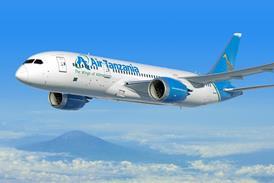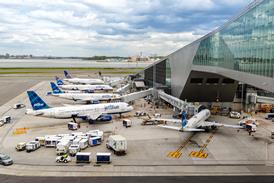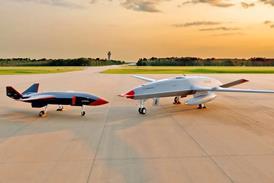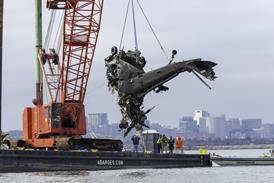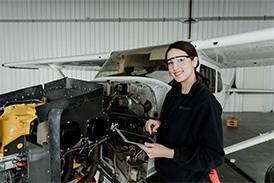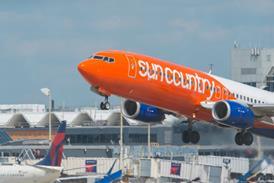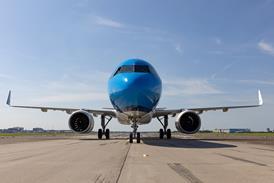Vertical Aerospace’s chief test pilot Si Davies has hailed the success of the initial wing-borne flight of the company’s VX4 prototype, the first of around a dozen such sorties expected with the aircraft in a conventional take-off and landing (CTOL) configuration.
Describing the 22 May flight as “really fantastic”, Davies says the all-electric aircraft handled “a little bit nicer than expected”, while the predictions around motor performance and drag were “pretty much spot on”.
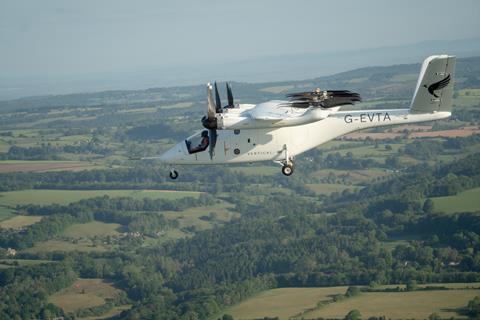
“I’m so pleased for the whole team; we have spent a lot of time getting ready for this flight,” he says
Taking place from the developer’s Kemble flight-test centre, the sortie saw the VX4 leave the confines of the airfield for the first time, following a short route to the north of the facility.
Rotation took place at 85kt (157km/h) and the approach was conducted at 95kt, with the VX4 cruising at about 100kt. That will later be pushed to around 120kt on the demonstrator aircraft, just shy of the 130kt intended for the production version.
Flight duration will also be progressively increased “to build confidence in the modelling and the performance of the batteries and motors”.
“Certainly we are looking at achieving ranges in use that will allow us to position the aircraft around the UK for demonstration flights,” he says.
Davies now expects to perform around a dozen flights in the CTOL configuration as the envelope is expanded before the vertical take-off and landing VX4 moves to the next phase of flight testing – the transition from thrust-borne to wing-borne flight.
That milestone – the fourth and final phase of Vertical’s flight-test plan – is expected in the second half of the year.
In the meantime, the company will use the current period of unsettled weather in the UK to “look at all our data to refine our models” before attempting the next sortie in “another week or two” as the team is “in no rush”.

Davies is full of praise for the way the VX4 flew, however, pointing to the “pleasing note” of the propulsion system in the cockpit and the response to pilot inputs.
“I didn’t have to think terribly hard – it felt very natural and intuitive to fly,” he says.
“It is very responsive in acceleration along the runway, it got into the air very quickly indeed,” he adds.
In preceding weeks, Davies had carried out “countless” low-speed taxi tests up to 60kt, with around another six runs at speeds just short of rotation.
Besides proving the performance of the aircraft itself, Davies also highlights the confidence shown by the Civil Aviation Authority in approving the flight-test.
“The key milestone for us is not just the wing-borne flight but going flying off the airfield around the southwest of England.”
A second VX4 prototype is scheduled to join the test fleet in the coming months and Davies is confident that “quite quickly we will have it flying to the same envelope” as the current example.
Vertical expects to achieve certification for the VX4 in 2028.

